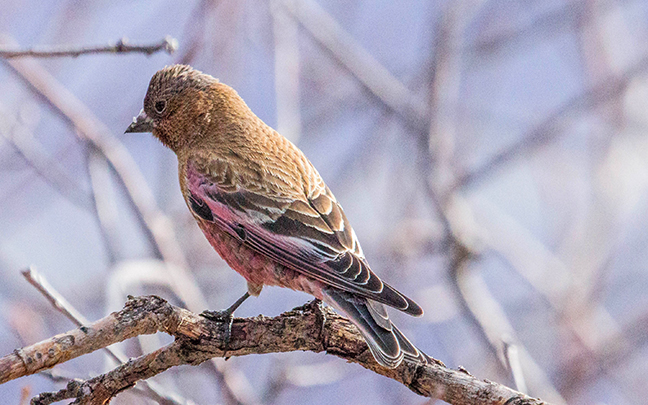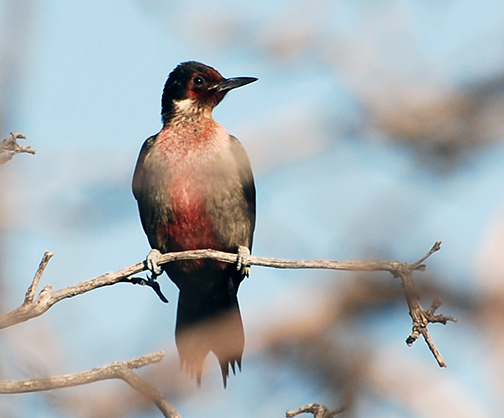What’s disappearing from our forests? Birds

A Brown-capped rosy finch. Mark Fuller photo.
What do the Brown-capped rosy finch, Rufous hummingbird, Evening grosbeak and Pinyon jay all have in common? Well, they are all beautiful. They’re also among the bird species that could become a rare sight in the Roaring Fork Valley, if we see them at all.
These birds and others are all experiencing significant population declines, according to the 2025 State of the Birds report released this spring. They are among the Tipping Point species detailed in the report – birds whose populations have declined by more than 50 percent in the last 50 years.
Rebecca Weiss, naturalist and guide of the birding program at the Aspen Center for Environmental Studies, has observed the trends first-hand.
“As a birder myself, and leading many field trips, over time I’ve been able to feel these declines,” she said. “It’s real everywhere and its real here in the valley.”
Among local species, the Brown-capped rosy finch (it has been described as looking like raspberry ice cream smothered in chocolate) is a high-altitude bird famous locally for descending en masse to certain birdfeeders at Snowmass Ski Area. It’s a good bet there have been visitors to Sam’s Knob at Snowmass who came for the finches, but stayed for the skiing and vice versa. This bird is one of 42 species on the Red Alert Tipping Point list due to its perilously low populations and continued steep decline in numbers.
Of the 37 species on the Orange Alert Tipping Point list, the Black swift, Rufous hummingbird and strikingly colorful Evening grosbeak are all birds that have historically had a strong local presence. Species on this list have shown long-term population losses and accelerated declines in recent years, according to the State of the Birds report.
“These are all amazing birds that we love here,” Weiss said. “It’s sad to see them in decline.”
The 33 species on the Yellow Alert list (long-term population losses, but trending toward relatively stable) include local finds such as the Lewis’ woodpecker, Olive-sided flycatcher, Pinyon jay and Black rosy finch.
Lewis’ woodpeckers were an unexpected head-turner at Glassier Open Space in 2021. With a pink belly and dark green back, this bird is unlike any other in the woodpecker family. Its presence at Glassier is a reminder of the importance that open space plays for a wide range of wildlife. At North Star Nature Preserve, habitat improvement projects have enhanced wetlands that are crucial to many of the 92 avian species that have been documented there.
However, according to the State of the Birds report, which focuses on birds by habitat type across the United States, more than 50 percent of Western-forest birds are declining in number due to habitat degradation from fire suppression and industrial timber management.
While the report is sobering in its assessment – a third of all American bird species are in trouble – it also offers success stories in bird conservation. And it notes the important role birders in every community can play. Data collected by citizens during Christmas bird counts and observations voluntarily logged on eBird, for example, provide scientists with important information for the analysis of population trends among hundreds of species. The work of citizen scientists is credited in the report.
Nearly 100 million Americans are bird watchers – more than a third of the U.S. adult population, according to a study by the U.S. Fish and Wildlife Service. Locally, ACES birding programs are a good place to start, and Weiss will again lead a slate of birding outings on Pitkin County open spaces this summer and fall. Roaring Fork Audubon also offers summer field trips for birders, including one to Glassier Open Space. If you’ve never seen the species at risk locally, and, oh, so many others, it’s time to look!
– By Pitkin County Open Space and Trails
How to help
(A few measures ordinary citizens can take to protect birds)
Is morning coffee a must? Consider bird-friendly coffee
Address problem windows
Cats and birds – a bad combination
Turn off the lights
One last cool link
The spring bird migration

A Lewis’ woodpecker at Glassier Open Space. OST photo.
